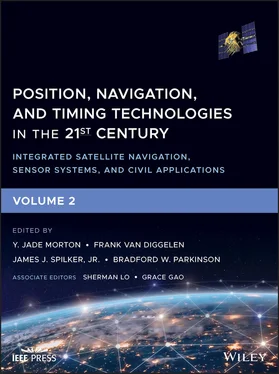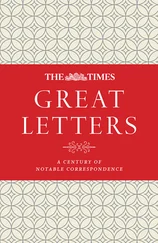39 39 N.S. Correal, S. Kyperountas, Q. Shi, and M. Welborn, “An ultrawideband relative location system,” in Proceedings of the IEEE Conference on Ultra Wideband Systems and Technology, November 2003, pp. 394–397.
40 40 D. Dardari et al., “Ranging with ultrawide bandwidth signals in multipath environments,” Proceedings of IEEE, Vol. 97, No. 2, February 2009, pp. 404–426.
41 41 S. Gezici, Z. Tian, G. V. Giannakis, H. Kobaysahi, A.F. Molisch, H.V. Poor, and Z. Sahinoglu, “Localization via ultra‐wideband radios: A look at positioning aspects for future sensor networks,” IEEE Signal Processing Magazine, Vol. 22, No. 4, pp. 70–84, July 2005.
42 42 R.J. Fontana, “Recent system applications of short‐pulse ultra‐wideband (UWB) technology,” IEEE Transactions on Microwave Theory and Techniques, Vol. 52, No. 9, pp. 2087–2104, September 2004.
43 43 Active Bat website, http://www.cl.cam.ac.uk/research/dtg/attarchive/bat/
44 44 Hexamite: http://www.hexamite.com/
45 45 S. Venkatraman and J. Caffery, “Hybrid TOA/AOA techniques for mobile location in non‐line‐of‐sight environments,” IEEE WCNC 2004, Vol. 1, pp. 274–278, March 2004.
46 46 C. Yang and H.‐R. Shao, “WiFi‐based indoor positioning,” IEEE Communications Magazine, Vol. 53, No. 3, 150–157, 2015.
47 47 D. Zhang, F. Xia, Z. Yang, L. Yao, and W. Zhao, “Localization technologies for indoor human tracking,” in Proceedings of the 5th International Conference on Future Information Technology (FutureTech ‘10), May 2010.
48 48 AeroScout. [Online]. Available: http://www.aeroscout.com/
49 49 Wherenet, https://www.zebra.com/us/en/solutions/location‐solutions/enabling‐technologies/wherenet.html
50 50 J. Werb and C. Lanzl, “Designing a position system finding things and people indoors,” IEEE Spectrum, Vol. 35, No. 9, pp. 71–78, September 1998.
51 51 A. Stelzer, K. Pourvoyeur, and A. Fischer, “Concept and application of LPM – A novel 3‐D local position measurement system,” IEEE Transactions on Microwave Theory and Techniques, Vol. 52, No. 12, pp. 2664–2669, 2004.
52 52 S. Gezici, “A survey on wireless position estimation,” Wireless Personal Communications, Vol. 44, No. 3, pp. 263–282, 2008.
53 53 J. Zhou, K.M.‐K. Chu, and J.K.‐Y. Ng, “Providing location services within a radio cellular network using ellipse propagation model,” in Proceedings of the 19th International Conference on Advanced Information Networking and Application, March 2005, pp. 559–564.
54 54 A. Teuber and B. Eissfeller, “A two‐stage fuzzy logic approach for wireless LAN indoor positioning,” in Proceedings of the IEEE/ION Position Location Navigation Symposium, Vol. 4, April 2006, pp. 730–738.
55 55 A. Kotanen, M. Hannikainen, H. Leppakoski, and T.D. Hamalainen, “Experiments on local positioning with Bluetooth,” in Proceedings of the IEEE International Conference on Information Technology: Computer and Communication, April 2003, pp. 297–303.
56 56 J. Hallberg, M. Nilsson, and K. Synnes, “Positioning with Bluetooth,” in Proceedings of the IEEE 10th International Conference on Telecommunication, Vol. 2, March 2003, pp. 954–958.
57 57 K. Pahlavan, X. Li, and J. Makela, “Indoor geolocation science and technology,” IEEE Communication Magazine, Vol. 40, No. 2, pp. 112–118, February 2002.
58 58 T. Chrysikos, G. Georgopoulos, and S. Kotsopoulos, “Site‐specific validation of ITU indoor path loss model at 2.4 GHz,” 10th IEEE International Symposium on a World of Wireless, Mobile and Multimedia Networks (WoWMoM), June 2009, pp. 1–6.
59 59 B.B. Parodi, H. Lenz, A. Szabo, H. Wang, J. Horn, J. Bamberger, and J. Obradovic, “Initialization and online‐learning of RSS maps for indoor/campus localization,” Proceedings of Position Location and Navigation Symposium (PLANS 06), IEEE/ION, Myrtle Beach, South Carolina, 2006, pp. 24–27.
60 60 https://combain.com/
61 61 https://unwiredlabs.com/
62 62 https://location.services.mozilla.com/
63 63 https://www.navizon.com/wifi‐cell‐tower‐location‐database.php
64 64 D. Han, S. Jung, M. Lee, and G. Yoon, “Building a practical Wi‐Fi‐based indoor navigation system,” IEEE Pervasive Computing, Vol. 13, No. 2, pp. 72–79. 2014.
65 65 P. Bahl and V.N. Padmanabhan, “RADAR: An in‐building RF‐based user location and tracking system,” in Proceedings of the IEEE INFOCOM 2000, Vol. 2, March 2000, pp. 775–784.
66 66 V. Otsason, A. Varshavsky, A. LaMarca, and E. de Lara, “Accurate GSM indoor localization,” UbiComp 2005, Lecture Notes Computer Science, Springer‐Verlag, Vol. 3660, 2005, pp. 141–158.
67 67 Gimbal: http://www.gimbal.com/
68 68 iBeacon: https://developer.apple.com/ibeacon/
69 69 A. LaMarca, Y. Chawathe, S. Consolvo, J. Hightower, I. Smith, J. Scott, T. Sohn, J. Howard, J. Hughes, F. Potter, J. Tabert, P. Powledge, G. Borriello, and B. Schilit, “Place lab: Device positioning using radio beacons in the wild,” in Proceedings of the 3rd International Conference on Pervasive Computing, 2005, pp. 116–133.
70 70 M. Youssef and A. Agrawala, “The Horus WLAN location determination system,” in Proceedings of the Annual International Conference on Mobile Systems, Applications and Services, 2005, pp. 205–218.
71 71 T. Roos, P. Myllymaki, H. Tirri, P. Misikangas, and J. Sievanan, “A probabilistic approach to WLAN user location estimation,” International Journal of Wireless Information Networks, Vol. 9, No. 3, pp. 155–164, July 2002.
72 72 P. Castro, P. Chiu, T. Kremenek, and R.R. Muntz, “A probabilistic room location service for wireless networked environments,” in Proceedings of the 3rd International Conference on Ubiquitous Computing, Atlanta, GA, September 2001, pp. 18–34.
73 73 S. Saha, K. Chaudhuri, D. Sanghi, and P. Bhagwat, “Location determination of a mobile device using IEEE 802.11b access point signals,” in Proceedings of the IEEE Wireless Communications and Networking Conference, Vol. 3, March 2003, pp. 1987–1992.
74 74 A.M. Ladd, K.E. Bekris, A. Rudys, L.E. Kavraki, and D.S. Wallach, “On the feasibility of using wireless Ethernet for indoor localization,” IEEE Transactions on Robotics and Automation, Vol. 20, No. 3, pp. 555–559, June 2004.
75 75 W. Sun, J. Liu, C. Wu, Z. Yang, X. Zhang, and Y. Liu, “MoLoc: On distinguishing fingerprint twins,” in Proceedings of IEEE International Conference on Distributed Computing Systems (ICDCS), 2013a.
76 76 V. Moghtadaiee, A.G. Dempster, and S. Lim, “Indoor localization using FM radio signals: A fingerprinting approach,” in IPIN, September 2011, pp. 1–7.
77 77 Y. Chen, D. Lymberopoulos, J. Liu, and B. Priyantha, “Indoor localization using FM signals,” IEEE Transactions on Mobile Computing, Vol. 12, No. 8, 1502–1517, 2013.
78 78 A.S.‐I. Noh, W.J. Lee, and J.Y. Ye, “Comparison of the mechanisms of the Zigbee’s indoor localization algorithm,” in Software Engineering, Artificial Intelligence, Networking, and Parallel/Distributed Computing, 2008, SNPD ‘08. Ninth ACIS International Conference on, 2008, pp. 13–18.
79 79 J. Yang and R. Rao, “Multi‐subnetwork switching mechanism in the large‐scale Zigbee mesh network for the real‐time indoor positioning system,” in Multimedia Information Networking and Security (MINES), 2011 Third International Conference on, 2011, pp. 100–104.
80 80 A. Anshul Rai and K.K. Chintalapudi, P. Venkat, and R. Sen, “Zee: Zero‐effort crowdsourcing for indoor localization,” in Proceedings of the 18th Annual International Conference on Mobile Computing and Networking (MobiCom), August 2012.
81 81 R. Smith, M. Self, and P. Cheeseman, “Estimating uncertain spatial relationships in robotics,” in Autonomous Robot Vehicles (eds. I.J. Cox and G.T. Wilfong), pp. 167–193, Springer‐Verlag New York, Inc., 1990.
Читать дальше











